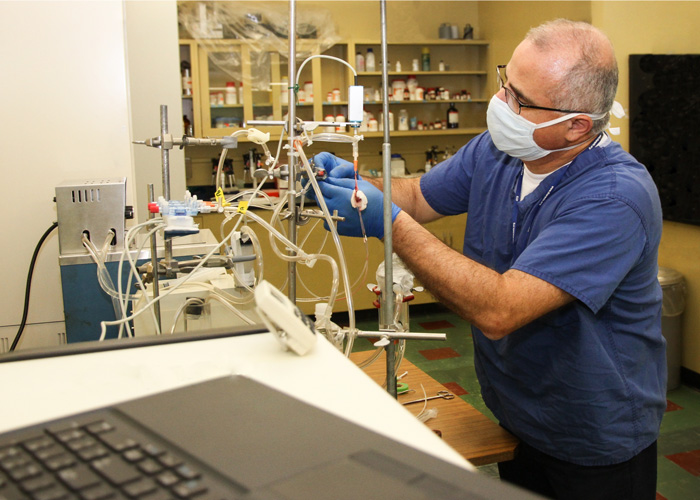Lee Dissertation Abstract
Noninvasive Perfusion MRI and Angiography with Arterial Spin Labeling (ASL) in the Rat Spinal Cord
Dissertation Date: July 17, 2023
The purpose of this dissertation research was to develop noninvasive perfusion magnetic resonance imaging (MRI) and angiography techniques using arterial spin labeling (ASL) in the rat spinal cord.
Traumatic spinal cord injury (SCI) is a serious medical problem that leads to long-term functional impairments. In recent years, minimizing secondary injury by restoring blood flow to the injured cord has been advocated as a clinical recommendation for spinal cord trauma. Consequently, perfusion measurements can be used to identify tissue at risk of secondary injury and tissue that might be salvageable with clinical intervention. However, most current methods to measure spinal cord perfusion are invasive, which calls for development of noninvasive methods.
ASL is an MRI technique for noninvasive measurement of blood flow that relies entirely on magnetic labeling of spins in the blood (i.e., water protons) without exogenous agents. While it has been used extensively in the brain, its application and refinement in the spinal cord is lacking. In the current research, multiple ASL variants were evaluated and optimized for the unique challenges inherent for MRI of the spinal cord in a rat model. Flow-sensitive alternating inversion recovery (FAIR) is an ASL technique used previously in the rodent spinal cord, but its relationship with injury severity and outcomes has not been investigated. We used FAIR to measure spinal cord blood flow (SCBF) in the thoracic level of rats with spinal cord contusion injury. While SCBF decreased 24 hours post-injury in injured animals compared to sham injury, other parametric MRI metrics including T1 and diffusion MRI metrics were more strongly correlated with injury severity. Next, other two ASL variants were refined for thoracic SCBF measurements. Pseudo-continuous ASL (pCASL) is the most recommended and well-established ASL method for brain applications due to its high signal to noise and efficiency of labeling. It holds potential for use in the spinal cord but its primary drawback is the requirement of a discrete labeling plane which may be challenged in organs with complex vascular anatomy such as the spinal cord. Velocity-selective ASL (VSASL) is an alternative method that creates contrast based on the velocity of blood rather than its spatial location. We showed that both pCASL and VSASL could successfully measure SCBF in the thoracic cord but with proper motion suppression strategies, pCASL demonstrated relatively higher temporal SNR (tSNR). Finally, vessel-selective ASL is a variant that labels blood in a single or several feeding arteries to examine individual arterial anatomy or perfusion territories. We optimized this technique for the rat cervical spinal cord to examine the spinal cord arterial anatomy. The results show a high degree of individual variability in the number, level, and laterality of segmental arteries that supply the spinal cord. SCBF maps with vessel selective encoding clearly depicted the contribution of each artery to perfusion within the cord, again highlighting the high degree of individual variability.
In summary, these studies expanded the set of tools to measure spinal cord perfusion and blood dynamics in the healthy and injured spinal cord. These results will facilitate the use of perfusion MRI in preclinical studies to examine therapies that target spinal cord perfusion and serve as strong basis to overcome the translational challenges to human spinal cord perfusion MRI.
Return to Dissertation Schedule


